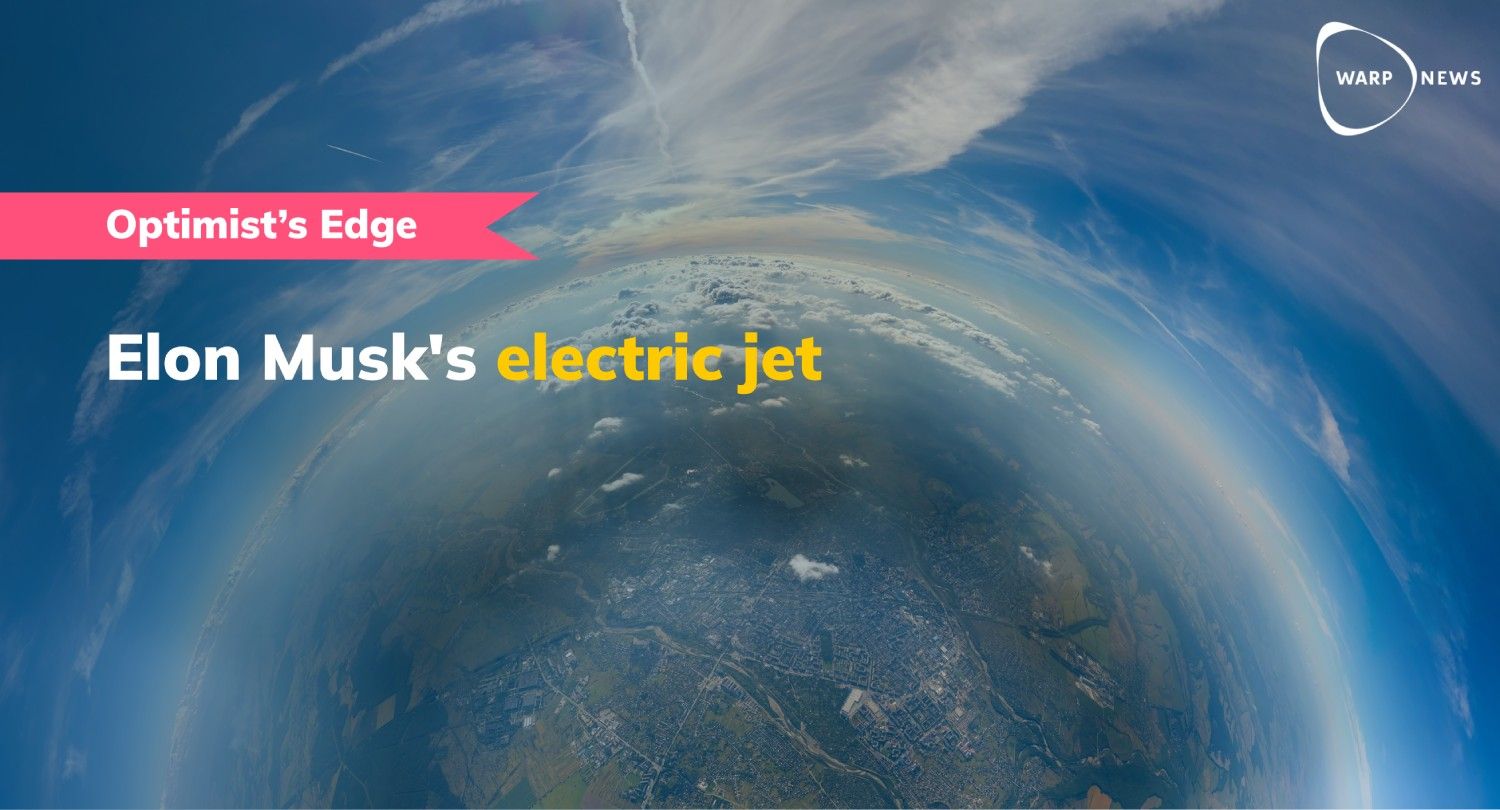
💡 Optimist's Edge: Can Elon Musk's electric airplane beat regular jets?
Could Elon Musk's proposed electric jet fly longer than fossil-fueled jets? Yes, with higher battery density and a completely new design of the aircraft, electric airplanes with a range greater than fossil-fueled airplanes are possible.
Share this story!
📉 What people think
Most people do not believe electric airplanes will be able to fly longer distances than traditional planes, according to a recent survey by Warp News.

📈 Here are the facts
I’m so dying to do a supersonic, electric VOTL jet, but adding more work will make my 🧠 🧨
— Elon Musk (@elonmusk) October 7, 2021
On the Joe Rogan podcast, Elon Musk talked about electric aircraft. This is what he said:
"Airplanes will certainly go electric. Of course, the energy required to make planes fly is significantly higher than that of cars. It takes around 400 watt-hours per kilogram of battery for an airplane to easily fly 1,000 kilometers or more, including some reserves for emergency range."
As co-founder and CEO of Heart Aerospace, Anders Forslund is actually building an electric airplane.
“I think Elon uses first principles and above all, I think he wants to get high in altitude so that he gets basically zero air resistance but can still use electric motors, as they do not require any oxygen,” he says in an email.
During an interview at MIT Musk gave some more detail:
- It would be a VTOL, meaning vertical take-off and landing, like a drone.
- Supersonic speed, meaning faster than the speed of sound, 1236 km/h.
- No tails or fins. He would instead use the electric motor to steer the plane.
- Around 70 percent of the plane would consist of batteries.
- If you have 75-80 percent batteries the range will take you transcontinental in the U.S.

Musk also said:
"Once you have reached 400 watt-hours per kilogram of battery, only gradual increases of 20 percent battery capacity would be enough to double the range of the aircraft. We are gradually getting there. At the moment we are technically at 300 watt-hours."
That means that this kind of aircraft eventually will be able to reach the same range as the longest commercial flights we have today, around 15 000 kilometers, 9300 miles.
The density needed for that is several years away. Experts think that we will reach 400 watt-hours around the year 2030 and lithium-ion batteries improve by 3-5 percent per year.
But – there is a lot of research and progress being made for batteries. A big breakthrough would not be surprising in the next 10-15 years.
💡 Optimist's Edge
The global aviation industry produces around 2 percent of all CO2 emissions. Aviation is responsible for 12 percent of the whole transportation sector.
At the UN Climate Conference in Paris 2015, the 196 countries agreed to try to keep “a global temperature rise this century well below 2 degrees Celsius above pre-industrial levels and to pursue efforts to limit the temperature increase even further to 1.5 degrees Celsius.” Then we need to reduce emissions as soon as possible and reach net zero around 2050. To stay below 1.5 °C of global warming, emissions need to be cut by roughly 50% by 2030.
This kind of eVOTLs could help us get there by 2050. Because of the progress of battery technology, eVOTL will have no or very little effect during the 2020s, but could between 2030 and 2050 play a bigger and bigger role in cutting emissions from aviation.
Vertical take-off and landing would change how airports look, and if they are needed at all. Potentially they could at least be much smaller since no runways are needed.
Like electric cars, eclectic airplanes will be cheaper to operate than fossil-fueled airplanes. That means the cost of air travel will go down.
👇 How to get the Optimist’s Edge
Taking on this task will be extremely hard, but the impact on humanity will be very big. CO2 emissions from aviation will have to be solved in the coming decades. For shorter flights many are already working on the solution, but so far no one has gone all-in on solving the range flights.
The good news is that if you come up with a really serious, trustworthy plan you will likely have a financial backer in Elon Musk.
If you don’t want to take on the entire task, there are many smaller important things you can do which will make a difference.
- Batteries are key to a sustainable, electric future (not just in aviation). Despite many new factories popping up, more entrepreneurs are needed. See our interview with William Bergh for three battery-related business ideas.
- Battery research also needs more brainpower.
- There are several companies working on electric aviation.
- Heart Aerospace in Gothenburg, Sweden, makes a 19-seater commercial electric aircraft.
- German company Lilium develops an eVTOL.
- “I would say that we are on the path to what Elon is talking about more than anybody in the entire electric aircraft industry,” co-founder of Whisper Air, Mark Moore says.
- Buy an electric car. Indirectly this helps move the entire electric vehicle field forward (and you will save money and help the world fight climate change.)
If you want to dive deeper into the topic, this article is a good start: Is Elon Musk’s supersonic electric VTOL jet actually possible?
You now have an advantage because you have gained this knowledge before most others –